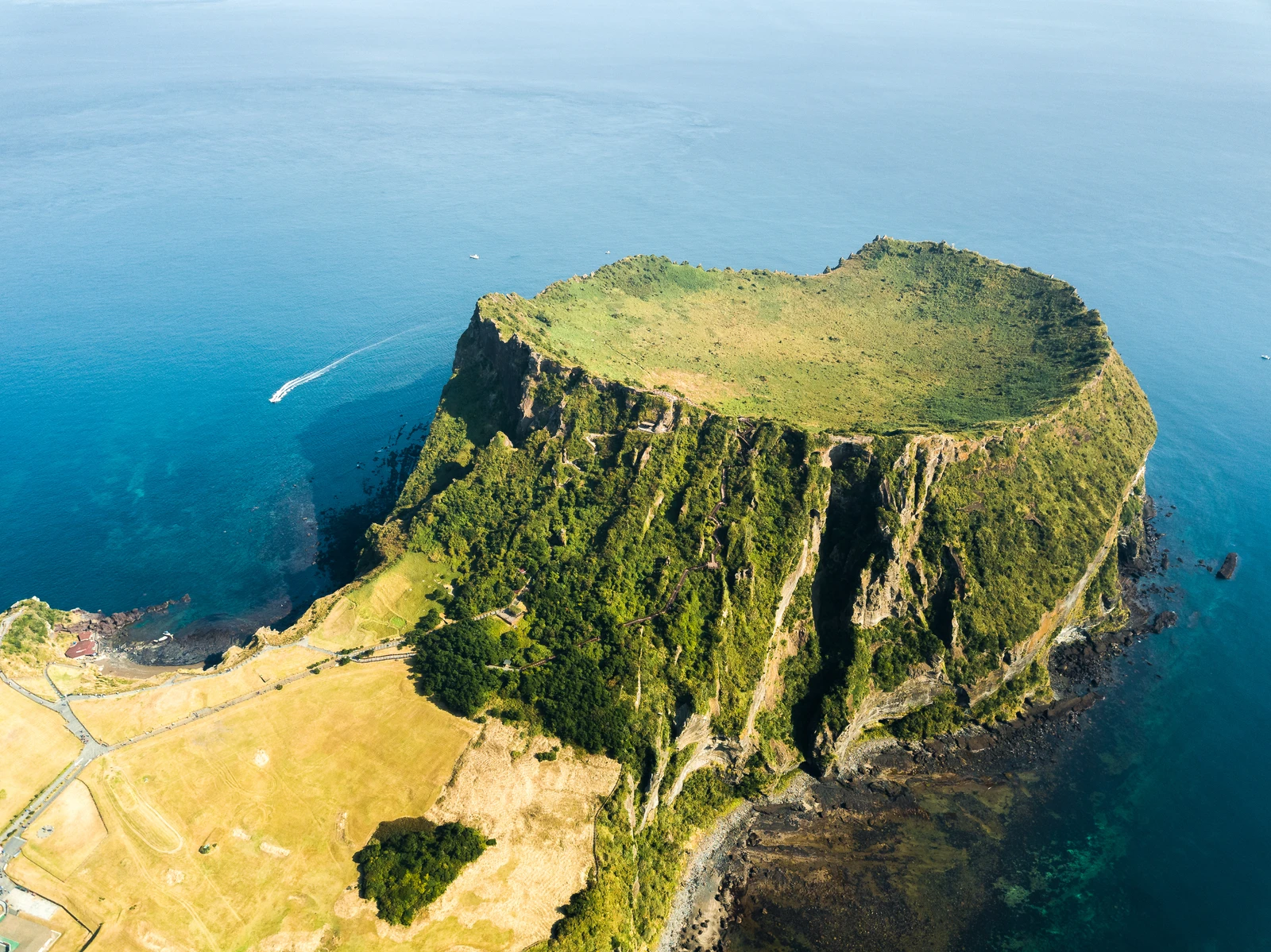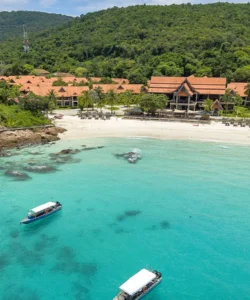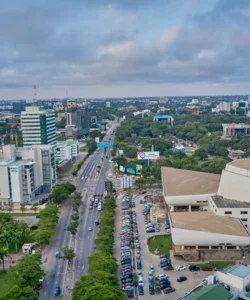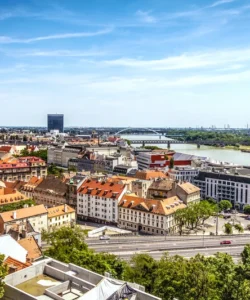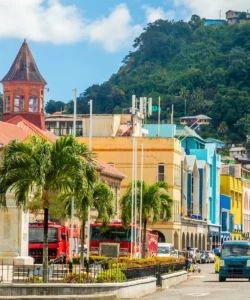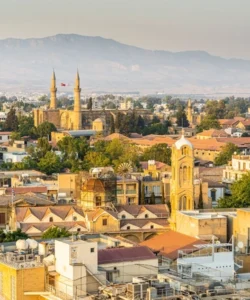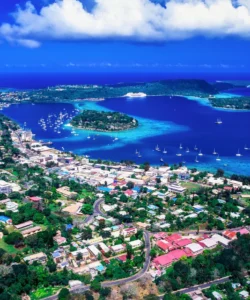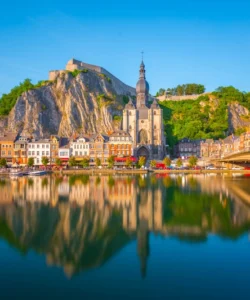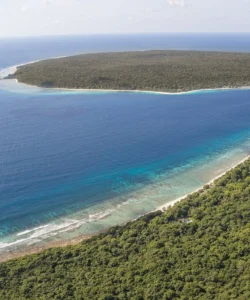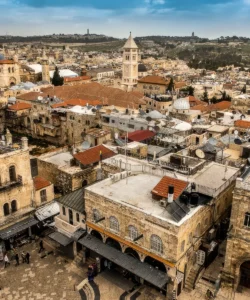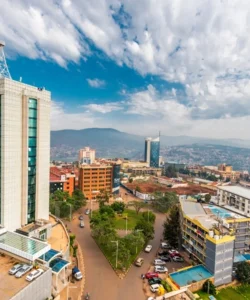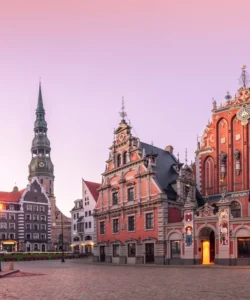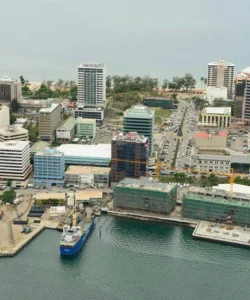Jeju Island (제주도; 濟州島) is South Korea’s largest island and its only self-governing province, located southwest of the Korean Peninsula. Formed by volcanic eruptions over millions of years, it is a truly unique natural wonder, celebrated for its stunning volcanic landscapes, pristine beaches, lush forests, and distinctive local culture. Recognized as a UNESCO World Heritage site for its geological significance, Jeju is a beloved destination for domestic and international travelers alike, often referred to as “Hawaii of Korea.”
![]()
Name: Jeju Island (제주도, Jeju-do)
Address: Jeju Province, South Korea. The two main cities are Jeju City (north) and Seogwipo City (south).
How to get there:
Jeju Island is primarily accessible by air and sea:
- By Air: This is by far the most common and convenient way.
- Jeju International Airport (CJU): Has extremely frequent flights from major South Korean cities (Seoul Gimpo, Busan, Daegu, Gwangju, Cheongju, etc.). Flights from Seoul Gimpo (GMP) to Jeju are among the busiest air routes in the world.
- There are also some direct international flights, mostly from China and Japan.
- By Ferry: Ferries operate from several mainland Korean ports (e.g., Mokpo, Wando, Yeosu, Busan) to Jeju Island. While slower, it can be a more scenic option or suitable for those traveling with vehicles.
Landscape and Architecture:
Jeju Island’s landscape is a dramatic tapestry woven by volcanic forces and complemented by human interaction:
- Hallasan Mountain: The island’s majestic centerpiece and South Korea’s highest peak (1,950 meters / 6,398 feet), Hallasan is an active (though dormant) shield volcano. Its summit features a beautiful crater lake (Baengnokdam), and its slopes are home to diverse ecosystems, from subtropical forests at its base to alpine flora near the summit. The mountain is a major hiking destination.
- Volcanic Landforms (UNESCO Heritage): Jeju is globally renowned for its unique and extensive volcanic features, which are collectively a UNESCO World Heritage site (“Jeju Volcanic Island and Lava Tubes”):
- Oreums (Parasitic Cones): Over 360 small, parasitic volcanoes dot the island, each with its own unique shape and charm. Many are easily accessible for short hikes.
- Lava Tubes (e.g., Manjanggul Cave): Extensive underground lava tubes, formed by flowing lava, are some of the longest and most impressive in the world. Manjanggul Cave is a popular tourist attraction.
- Seongsan Ilchulbong (Sunrise Peak): An iconic tuff cone, a UNESCO site, formed by hydrovolcanic eruptions. Its dramatic crater and coastal location make it a spectacular spot for sunrise views and coastal walks.
- Jusangjeolli Cliffs: Unique hexagonal basalt rock columns formed by cooling lava, creating a stunning coastal formation.
- Coastlines and Beaches: Jeju boasts a diverse coastline with stunning sandy beaches (e.g., Hyeopjae, Hamdeok), dramatic cliffs, and unique rock formations.
- Forests and Waterfalls: Lush temperate forests cover much of the island, and numerous waterfalls (e.g., Cheonjiyeon, Jeongbang, Cheonjeyeon) add to its natural beauty.
- Dol Hareubang (Stone Grandfathers): Iconic basalt stone statues, unique to Jeju, found throughout the island. These mushroom-shaped figures with bulging eyes are traditional guardians, symbolizing protection and fertility, and are often seen as symbols of Jeju itself.
- Traditional Jeju Architecture: While modern buildings are prevalent, especially in the cities, traditional Jeju houses, made from black volcanic rock and thatched roofs, can still be found in folk villages (e.g., Seongeup Folk Village) or as part of guesthouses. These resilient homes were designed to withstand the island’s strong winds.
- Haenyeo (Women Divers) Communities: The traditional homes and workplaces of the Haenyeo (Jeju’s legendary free-diving fisherwomen, a UNESCO Intangible Cultural Heritage) are an important cultural element of the coastal landscape.
What makes it famous:
Jeju Island is famous for:
- UNESCO World Heritage Site (Natural): Recognized for its outstanding universal geological value, including Hallasan Mountain, Seongsan Ilchulbong, and the Geomunoreum lava tube system. It’s one of only a few places worldwide to have received a triple crown from UNESCO (World Natural Heritage, Biosphere Reserve, Global Geopark).
- Volcanic Landscapes: Its unique and diverse volcanic features are a major draw, offering a stunning array of geological wonders unlike anywhere else.
- “Island of Peace”: Designated as an “Island of World Peace” by the Korean government in 2005, it hosts international conferences and promotes peace initiatives.
- Haenyeo (Women Divers): The unique culture of Jeju’s Haenyeo, the traditional free-diving fisherwomen who harvest seafood without breathing apparatus, is a significant cultural asset and UNESCO Intangible Cultural Heritage.
- Popular Tourist Destination: A top domestic and increasingly international tourist destination for honeymoons, family vacations, and outdoor activities.
- Outdoor Activities: Offers a wide range of activities, including hiking (especially on Hallasan’s scenic trails), cycling around the coastal roads (Jeju Olle Trails), swimming, diving, and horse riding.
- Distinct Local Culture: Jeju has its own unique dialect, traditions, cuisine, and mythology, distinct from mainland Korea.
Differences from some other wonders:
Jeju Island distinguishes itself from other islands and natural wonders in several key ways:
- Volcanic UNESCO “Triple Crown”: While other islands are volcanic (e.g., Hawaii, some Japanese islands), Jeju’s comprehensive and perfectly preserved array of diverse volcanic formations (shield volcano, tuff cones, lava tubes, parasitic cones) that earned it a UNESCO Natural World Heritage status, Biosphere Reserve, and Global Geopark designation is exceptional. Few other single islands globally hold all three.
- Haenyeo Culture: The unique, matriarchal culture of the Haenyeo (women divers), a UNESCO Intangible Cultural Heritage, is an unparalleled human element deeply integrated with the island’s marine environment. This living cultural tradition is specific to Jeju.
- Island of Peace Designation: Its official designation as an “Island of World Peace” by a national government gives it a unique contemporary and political significance beyond its natural beauty.
- Accessibility for a “Remote” Feeling: Despite being an island, it is incredibly accessible by frequent flights, yet still offers a genuine sense of escape and natural wilderness, distinguishing it from mainland national parks.
- Distinct from Mainland Korea: While part of South Korea, Jeju has cultivated a strong and distinct cultural identity (dialect, food, customs) often different from the mainland, making it feel like a separate, special region.
In essence, Jeju Island is a remarkable natural and cultural wonder, a volcanic paradise that offers a unique blend of geological marvels, ancient traditions, and a peaceful escape, making it a truly unforgettable destination.
